Composing En Plein Air
By Joseph Weinzettle
There are different methods of plein-air composition.
First, there is the standard “window” method for composing your drawing or painting and there is a more open-ended way. The window method was described Italian author-artist Leon Battista Alberti (1404-1472) who started with a drawn rectangle, an “open window from which the subject to be painted may be seen”. Some art teachers use a mat board window to demonstrate this composition method.
This painting in progress, represents a “window” composition, or a single view of the landscape in a vertical rectangular format (below).
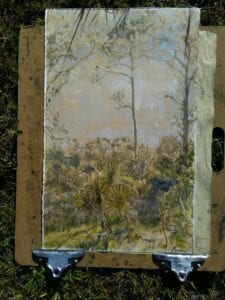
Another way of composing, used by American painter Rackstraw Downes, is to build the composition by adding sheets of paper as you go. What the composition becomes is far less predictable than Alberti’s window method.
Below, is how I’ve used this organic method in composing a landscape drawing. My media is bamboo brush and ink over silverpoint on toned gesso-prepared papers:
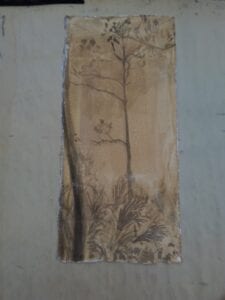
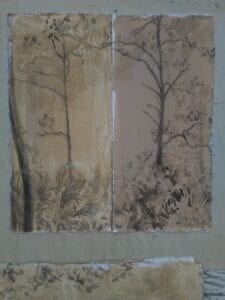
I started with a single viewpoint, then slightly pivoted to expand the scope of the composition on my right side. I added a third, fourth and then a fifth sheet on the left (below).


I used available sheets of paper. The sizes and tones don’t match. That’s not a concern at this point, as I am working out a plein-air composition, learning about this specific site and space (below).
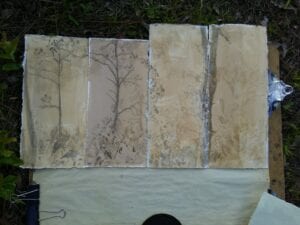
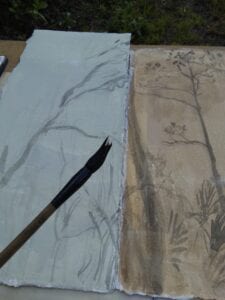
Downes’ method is adapted to pleinairism, allowing for the curvature of real space. Alberti’s methods limits the artist’s composition to a flat two-dimensional design. Breaking the frame and looking around is an important artist’s tool in composing en plein air.
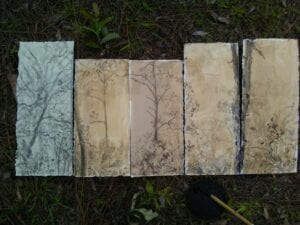
I may revisit this composition as a painting, either with a horizontal panel, or in panel sections, such as a triptych. The plein-air drawing process sometimes results in a stand alone artwork for exhibition but importantly, the process developed my awareness and understanding of the site space and its creative possibilities.


